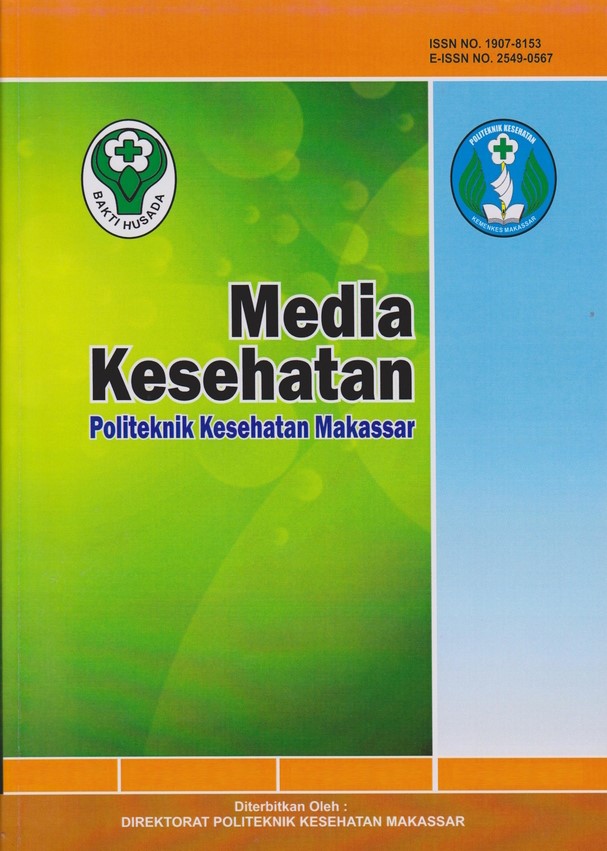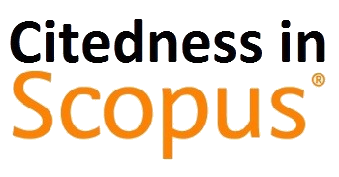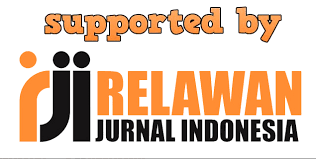Paparan Pestisida melalui ASI: Implikasi terhadap Kesehatan Bayi dan Risiko Stunting
DOI:
https://doi.org/10.32382/medkes.v20i1.1455Kata Kunci:
Pupuk Kimia, Pestisida, ASI, StuntingAbstrak
Penggunaan pupuk kimia dan pestisida yang meluas dalam pertanian modern telah meningkatkan hasil panen secara signifikan. Namun, peningkatan kekhawatiran tentang potensi implikasi kesehatan dari bahan kimia pertanian ini telah mendorong penelitian ekstensif. Tinjauan sistematis ini bertujuan untuk meneliti sejauh mana paparan zat-zat ini selama kehamilan dan menyusui dapat mencemari Air Susu Ibu (ASI). Kami bertujuan untuk menilai potensi efek buruk paparan pestisida dan pupuk dalam ASI terhadap kesehatan dan perkembangan bayi, dengan fokus pada prevalensi kontaminan, potensi risiko kesehatan, dan efektivitas intervensi untuk mengurangi paparan. Tinjauan sistematis ini dilakukan menggunakan basis data daring PubMed, Scopus, dan Google Scholar, mencakup periode 2017 hingga 2024. Medical Subject Headings (MESH) dan kata kunci target seperti "Pestisida," "Pupuk Kimia," "Air Susu Ibu," "Kontaminasi," “Kesehatan Ibu,” “Kesehatan Bayi,” dan “Stunting” digunakan dalam pencarian. Semua publikasi berbahasa Inggris ditinjau dan disertakan. Tinjauan ini mencakup investigasi intervensi seperti uji klinis acak dan studi kuasi-eksperimental. Pencarian menghasilkan 130 studi, dan setelah penyaringan, 10 studi disertakan dalam tinjauan ini. Penelitian secara konsisten menunjukkan adanya paparan pestisida dalam ASI, terutama di daerah pertanian intensif. Sebuah studi di Amerika Latin menemukan bahwa 100% sampel ASI mengandung residu diklorodifeniltrikloroetana (DDT). Penelitian di Meksiko melaporkan 76% sampel ASI mengandung turunan pestisida. Studi di Arab Saudi mendeteksi 16 jenis pestisida organoklorin (OCP). Di Indonesia, semua sampel ASI dari petani wanita mengandung residu p,p'-DDE di atas 0,001 mg/kg. Semua artikel yang disertakan dalam tinjauan ini adalah studi observasional, khususnya studi cross-sectional dan case-control, yang menyelidiki keberadaan pestisida dan polutan organik persisten (POPs) dalam ASI. Berbagai penelitian secara konsisten menunjukkan kontaminasi pestisida dalam ASI, menimbulkan keprihatinan serius mengenai dampaknya pada kesehatan bayi sejak dini. Paparan pestisida melalui ASI dapat berdampak negatif pada pertumbuhan dan perkembangan, khususnya pada sistem saraf, endokrin, dan reproduksi. Di Indonesia, paparan pestisida di lingkungan pertanian telah diidentifikasi sebagai faktor risiko signifikan terhadap kejadian stunting pada anak.
Kata Kunci : Pupuk Kimia; Pestisida; ASI; Stunting
Referensi
Qi S yu, Xu X ling, Ma W zhi, Deng S long, Lian Z xing. Effects of Organochlorine Pesticide Residues in Maternal Body on Infants. 2022;13(June).
Figueiredo TM, Pereira M, Henrique F, Granzotto B, Neto DG. Pesticide contamination of lactating mothers ’ milk in Latin America : a systematic review. 2024;1–16.
Mehta R V, Sreenivasa MA, Mathew M, Girard AW, Taneja S, Ranjan S, et al. A mixed-methods study of pesticide exposures in Breastmilk and Community & Lactating Women ’ s perspectives from. 2020;1–15.
Tudi M, Ruan HD, Wang L, Lyu J, Sadler R, Connell D, et al. Agriculture Development , Pesticide Application and Its Impact on the Environment. 2021;1–23.
Pirsaheb M, Limoee M, Namdari F, Khamutian R. Organochlorine pesticides residue in breast milk : a systematic review. 2015;
Rachmawati I, Hernawati S, Sulistyaningsih E. Risk Factors for Contamination of Pesticide Residues in Women ’ s Breast Milk Farmers in Agricultural Areas. 2021;10(1):596–604.
Du J, Gridneva Z, Gay MCL, Lai CT, Trengove RD, Hartmann PE, et al. Longitudinal study of pesticide residue levels in human milk from Western Australia during 12 months of lactation : Exposure assessment for infants. Nat Publ Gr. 2016;(November):1–11.
Kuang L, Hou Y, Huang F, Hong H, Sun H, Deng W, et al. Science of the Total Environment Pesticide residues in breast milk and the associated risk assessment : A review focused on China. Sci Total Environ [Internet]. 2020;727:138412. Available from: https://doi.org/10.1016/j.scitotenv.2020.138412
Serreau R, Terbeche Y, Rigourd V. Pollutants in Breast Milk : A Scoping Review of the Most Recent Data in 2024. 2024;
Metals H, Implications HH. Plants : Ecological Risks and Human Health Implications. 2021;
Alim KY, Rosidi A. Birth length , maternal height and pesticide exposure were predictors of child stunting in agricultural area. 2018;
El-saeid MH, Hassanin AS, Bazeyad AY. Levels of Pesticide residues in breast milk and the associated risk assessment Saudi Journal of Biological Sciences Levels of pesticide residues in breast milk and the associated risk assessment. Saudi J Biol Sci [Internet]. 2021;28(7):3741–4. Available from: https://doi.org/10.1016/j.sjbs.2021.04.062
Mehta R V, Sreenivasa MA, Mathew M, Girard AW, Taneja S, Ranjan S, et al. A mixed-methods study of pesticide exposures in Breastmilk and Community & Lactating Women ’ s perspectives from. 2020;1–14.
Kartini A, Subagio HW, Hadisaputro S, Kartasurya MI, Suhartono S, Budiyono B. Pesticide Exposure and Stunting among Children in Agricultural Areas. 2019;10:17–29.
Cahyaningrum D, Denny HM, Adi MS. Kandungan Pestisida Organoklorin dalam Air Susu Ibu di Daerah Pertanian Bawang Merah Kabupaten Brebes. 2018;13(1).
Torres-moreno AC, Mejia-grau K, Puente-delacruz L, Codling G, Luz A, Ríos-marquez O, et al. Chemosphere Polybrominated diphenyl ethers ( PBDEs ), polychlorinated biphenyls ( PCBs ), organochlorine pesticides ( OCPs ) in human breast milk from Colombia : A probabilistic risk assessment approach. Chemosphere [Internet]. 2023;339(May):139597. Available from: https://doi.org/10.1016/j.chemosphere.2023.139597
Mekonen S, Ambelu A, Wondafrash M, Kolsteren P. Exposure of infants to organochlorine pesticides from breast milk consumption in southwestern Ethiopia. Sci Rep [Internet]. 2021;(0123456789):1–10. Available from: https://doi.org/10.1038/s41598-021-01656-x
Witczak A, Pohoryło A, Abdel-gawad H. Endocrine-Disrupting Organochlorine Pesticides in Human Breast Milk : Changes during Lactation. 2021;1–19.
Mamontova EA, Tarasova EN, Mamontov AA. Chemosphere PCBs and OCPs in human milk in Eastern Siberia , Russia : Levels , temporal trends and infant exposure assessment. Chemosphere [Internet]. 2017;178:239–48. Available from: http://dx.doi.org/10.1016/j.chemosphere.2017.03.058
Widyawati SA, Suhartono S. Original Article. 2020;11:15–23.
Soleman SR, Jeem YA, Fathi M, Al B. Effect of pesticide exposure on stunting incidence : a systematic review and meta-analysis. 2024;67(10):510–8.
Areas A. Journal of Environmental Health. 2025;17(1):45–53.
Friedrich D, Zwirner NW. What immunology has to say about pesticide safety. 2024;(December):1–6.
Affairs C. Requested by the PETI committee Endocrine Disruptors : f rom Scientific Evidence to Human Health Protection. 2019;(March).
Acela L, Guevara-lara A, Dom MA, Andraca-adame JA, Torres-huerta AM. Concentrations of Organochlorine , Organophosphorus , and Pyrethroid Pesticides in Rivers Worldwide ( 2014 – 2024 ): A Review. 2024;
Sule RO, Condon L, Gomes A V. Review Article A Common Feature of Pesticides : Oxidative Stress — The Role of Oxidative Stress in Pesticide-Induced Toxicity. 2022;2022.
Kwon HK, Choi GB, Huh JR. Maternal inflammation and its ramifications on fetal neurodevelopment. Trends Immunol [Internet]. 2022;43(3):230–44. Available from: https://www.sciencedirect.com/science/article/pii/S1471490622000072
Cresto N, Forner-Piquer I, Baig A, Chatterjee M, Perroy J, Goracci J, et al. Pesticides at brain borders: Impact on the blood-brain barrier, neuroinflammation, and neurological risk trajectories. Chemosphere [Internet]. 2023;324:138251. Available from: https://www.sciencedirect.com/science/article/pii/S0045653523005180
Vinnars MT, Bixo M, Damdimopoulou P. Pregnancy-related maternal physiological adaptations and fetal chemical exposure. Mol Cell Endocrinol [Internet]. 2023;578:112064. Available from: https://www.sciencedirect.com/science/article/pii/S0303720723002150
Punamäki RL, Diab SY, Vänskä M, AlBarqouni N, Quota SR. Maternal and foetal exposure to potentially toxic metals of modern weaponry and infant cognitive, sensorimotor, and socioemotional development: The role of breastfeeding. Infant Behav Dev [Internet]. 2025;79:102040. Available from: https://www.sciencedirect.com/science/article/pii/S0163638325000141
Meyyazhagan A, Kuchi Bhotla H, Tsibizova V, Pappuswamy M, Chaudhary A, Arumugam VA, et al. Nutrition paves the way to environmental toxicants and influences fetal development during pregnancy. Best Pract Res Clin Obstet Gynaecol [Internet]. 2023;89:102351. Available from: https://www.sciencedirect.com/science/article/pii/S1521693423000512
Wu M, Shu Y, Song L, Wang Y. Prenatal thallium exposure and child neurodevelopment at 2 years: a birth cohort study in China. Ecotoxicol Environ Saf [Internet]. 2025;297:118232. Available from: https://www.sciencedirect.com/science/article/pii/S0147651325005688
Buralli RJ, Marques RC, Dórea JG. Pesticide effects on children’s growth and neurodevelopment. Curr Opin Environ Sci Heal [Internet]. 2023;31:100417. Available from: https://www.sciencedirect.com/science/article/pii/S2468584422000927
Oskar S, Balalian AA, Stingone JA. Identifying critical windows of prenatal phenol, paraben, and pesticide exposure and child neurodevelopment: Findings from a prospective cohort study. Sci Total Environ [Internet]. 2024;920:170754. Available from: https://www.sciencedirect.com/science/article/pii/S0048969724008933
Qi Z, Song X, Xiao X, Loo KK, Wang MC, Xu Q, et al. Effects of prenatal exposure to pyrethroid pesticides on neurodevelopment of 1-year- old children: A birth cohort study in China. Ecotoxicol Environ Saf [Internet]. 2022;234:113384. Available from: https://www.sciencedirect.com/science/article/pii/S014765132200224X
Li J, Song X, Luo T, Loo KK, Chen S, Gui T, et al. Effects of daily exposure to pyrethroid pesticides during infancy on children neurodevelopment at age four: A prospective study in rural Yunnan, China. Neurotoxicology [Internet]. 2025;108:105–12. Available from: https://www.sciencedirect.com/science/article/pii/S0161813X25000312
Effect of Nigella Sativa on Growth and IGF-1 Levels in Rats Prenatally Exposed to Pesticides. 2025;57(1):22–8.
Predieri B, Iughetti L, Bernasconi S, Street ME. Endocrine Disrupting Chemicals ’ Effects in Children : What We Know and What We Need to Learn ? 2022;
Unduhan
Diterbitkan
Cara Mengutip
Terbitan
Bagian
PDF downloaded: 126














 Email: mediakesehatan@poltekkes-mks.ac.id
Email: mediakesehatan@poltekkes-mks.ac.id
